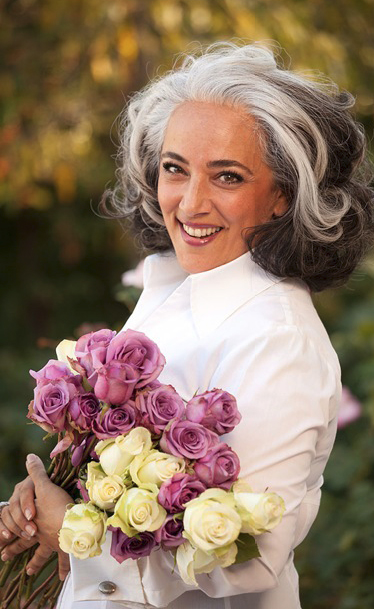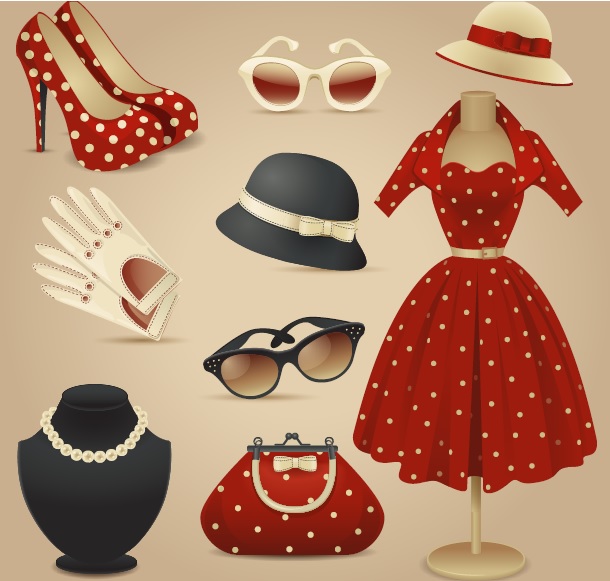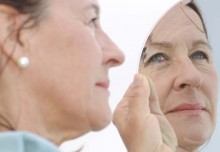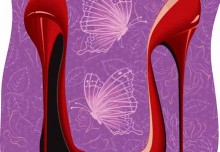
Discover how your clothes can make you look and feel beautiful
How do you feel in your clothes? Do you feel beautiful? According to fashion guru, Liana Chaouli, you should. Liana is the president and founder of Image Therapists International, Inc. and a globally recognized speaker and educator who consults with CEOs, celebrities, political figures, and people just like you. In this article Liana reveals how she goes about it.
Dr. Mache Seibel: Tell me about the relationship of feeling and looking good in terms of what we are actually wearing.
Liana Chaouli: There’s a symbiotic relationship between getting all dressed up and then seeing your reflection in the mirror. However, before there is a reflection in the mirror, something very important happens to us when we slide clothes onto our body, where we actually step into a pair of pants, when we step into a dress and close the zipper,when you have a cashmere sweater that we slide our arms through and then we gently slide it over our head and it covers our body, it envelops us.
Dr. Seibel: You make it so sensual.
Dressing is an embodied sensual action. Clothing is our second skin.
Liana: It is sensual. Dressing is an embodied sensual action. It is very, very sensual. And most people believe or the fashion industry leads us to believe that it’s only lingerie that is sensual. I don’t believe that though. I believe that clothing is our second skin, and that’s why the feeling of dressing is a huge part of how we show up in the world, how it shows up on our face. You know when you slide your hand into a cashmere sweater and you pull it over and the feeling of sliding it down your body under your arms, the inside of your arms, and the side of your body. That feeling which most of us don’t pay attention to, that is were it starts.
Dr. Seibel: So when you go to the store to buy some clothing, before you ever get to the mirror when you are in the dressing room with the door closed, your first relationship with what you’re about to purchase is really in the embodiment of that item, that garment, as you enter it.
Liana: Even before it comes into the dressing room. You’re out on the floor, you’re looking at something, and the next thing you do is you touch it. You’re sorting through the racks and you may not have enough information to know what you’re looking for because most people don’t.
So you walk into a store and your eyes find a certain color or something else and the next you do is you touch it. In fashion we call it “the hand of a garment.”
The way you touch it, the way it feels sends vibrations to your brain. And there’re all kinds of things going on in your head: Yes this feels good. No it doesn’t, this feels like my grandmother’s bath towel. No, I’m not going to wear this because this is like the thing that someone wore that I didn’t like. We are making those decisions in split seconds in the moment that we touch the garment.
Dr. Seibel: So the garment is actually a relationship that can both link you to the garment and the garment can be a vehicle that links you to things in the past, experiences in the past, people in the past that you identify with positively or negatively and that relationship is embodied in how radiant you feel when you wear it.
 Liana: Yes, absolutely; hence, I coined the domain of Image Therapy. And it’s not image consulting, it’s not personal shopping, it’s not dressing, it’s not styling, it’s Image Therapy because the second skin that we wear is literally so connected to our psyche. I have clients who stand in front of the mirror and suddenly are overwhelmed with tears of joy, tears of sadness, tears of something that they remember, or laughter, or caring, or anger, because the tactility of the garments connects, just like the sense of smell and just like the sense of sight sometimes connects directly into a memory that’s really, really old.
Liana: Yes, absolutely; hence, I coined the domain of Image Therapy. And it’s not image consulting, it’s not personal shopping, it’s not dressing, it’s not styling, it’s Image Therapy because the second skin that we wear is literally so connected to our psyche. I have clients who stand in front of the mirror and suddenly are overwhelmed with tears of joy, tears of sadness, tears of something that they remember, or laughter, or caring, or anger, because the tactility of the garments connects, just like the sense of smell and just like the sense of sight sometimes connects directly into a memory that’s really, really old.
Dr. Seibel: And our skin is our largest organ.
Liana: Yes!
Dr. Seibel: With so much surface area making that connection, it’s acting like a tactile trigger. It’s firing
the brain’s recall of whatever is associated with it.
Liana: Right! And your nervous system has built neurons over your childhood. So, if you were a girl or boy who walked out of your bedroom with your underwear on your head and your mother gave you a bad look that one gaze is enough to shut a part of us down and to make a contract, “I can’t be different and I cannot be seen and the world is not allowed to see me.” And we hold that contract without knowing in our consciousness, and we use our clothes to hide, to make ourselves not be seen in the world, or we use our clothes to hide us by showing up before we do.
Dr. Seibel: I remember you saying, “You love the dress but does the dress love you?” It’s really interesting because in hearing that without your insights, it would seem as though the dress just doesn’t look good on you if it doesn’t love you; but what you’re saying is the love is the feelings that is embodied in the tactile experience of shopping and the sensual experience of putting that garment on you, of touching it on the rack even before that, it could love you. That’s absolutely fascinating.
Liana: Yeah! If it doesn’t raise you up, if it doesn’t love you back, then it’s not supporting your mission. If it walks in half an hour before you do, then people will only remember that garment; but they won’t remember who wore it. So you must consciously understanding who you truly are: your hair color, your skin color, your eye color, your style architecture which is this masterpiece that your spirit gets to live in – your body. How are you presenting it to the world? How are you enveloping it so that the world gets to see you and your essence and not just the clothes?
Be proud of your assets, not ashamed of your flaws
Dr. Seibel: I see so many women who are in the forty-plus age range, when the body and skin quality can be changing. There’s certainly more wrinkles at fifty than at twenty-five. And so many women struggle with self-esteem.
What you’re saying is that if your clothes embody who you are, if you connect with them, then there is that potential for you to act differently, to look differently, to radiate differently, and to interact with those you come in contact differently. To really have a relationship like you’re with a supporting cast that’s going to allow you to interact in a more cohesive and full and truthful way, than you would if you came wearing something that you were detached from, or weren’t connected with at all.
Liana: Yeah, that’s very, very well put. That’s why I’m such a champion for teaching what I call my “Liana’s Triple-A Plan.” The first “A” stands for “Awareness,” the second “A” stands for “Acceptance” and the third “A” stands for “Action,” which is just a mindful action. I’m 55. I have an awareness of a 55-year-old woman, that my hair is going platinum; my skin isn’t what it used to be when I was 20. I have an awareness of what’s here in this moment.
Now I can choose to be upset about why I don’t look like Elizabeth Taylor when she was 20, or I can have an acceptance about what’s here, and take what’s really wonderful and bring out the best of who I am or who my client is. I say, “Be proud of your assets, not ashamed of your flaws.” The world is the other way around. Most of the fashion industry and even the fitness industry are saying, “Listen, who you are isn’t good enough, you’ve got to look like this.”
Most of the fashion industry is saying, “Who you are isn’t good enough.”
Dr. Seibel: In the 1500s wardrobe styles changed every decade. Now styles change every quarter. How are you going to get people to move from buying every decade to buying every quarter if what they have is good enough?
Liana: Yeah. I’m witnessing a lack of acceptance and self-esteem in 10-year-old girls who come to me and say “I’m fat,” and I say, “Really? Why would you say that?” “My mommy tells me that I’m fat.”
Dr. Seibel: There are a lot of kids who are fat but you’re talking about someone who’s appropriately sized but feels fat because they don’t look anorexic?
Liana: Uh-huh!
Dr. Seibel: I have met darn few perfect people.
Liana: [Laughs] I believe that if we have an awareness of the grace of aging, if we have a different viewpoint that accepts the mature woman as an elder and as wiser – like different cultures do – there would be a whole different shift in our understanding that honors us as we grow older.
_______________
Find out more about Liana at www.lianasgifts.com and get a gift and some “style appetizers” videos. Get a FREE copy of her new book as a gift to our readers by going to www.imagetherapists.com and sign up to receive it. You can also follow Liana on www.Facebook.com/imagetherapy.






